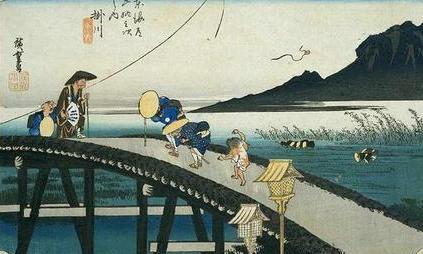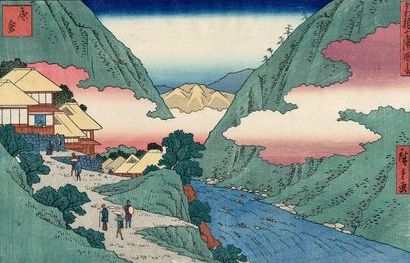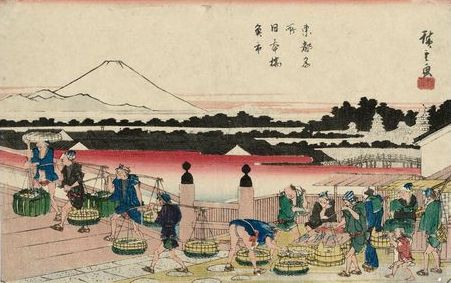Hiroshige and Japanse art: Everyday life
Lee Jay Walker
Modern Tokyo Time

Ando Hiroshige (1797-1858) was born during the Edo Period. He witnessed the continuity of the Edo Period and the gradual modernization processes that would result in the Meiji Restoration of 1868. Therefore, while Hiroshige doesn’t belong to the Meiji Period (1868-1912), he felt the pangs of change.
In the art world of Hiroshige, the world of everyday life comes alive. This is intermixed by buildings, nature, stunning landscapes, religious pilgrimages, and various aspects of Japanese culture.

In the first image, travelers utilize the bridge to take them over the River Kake. The backdrop of Mount Akiba is intermingled by farmers near the bridge harnessing rice. Therefore, Hiroshige is relating the natural world that existed during his travels.
Pilgrims also visited the region because of a famous Shinto shrine that was said to protect people from fire. Thus the Shinto shrine at the top of Mount Akiba had important religious significance.

In the above art piece, the fish market is encouraging people to buy quality fish. This fish market was in the environs of Nihonbashi Bridge. Therefore, unlike modern Tokyo with mega skyscrapers – and being a mega high-tech metropolis – the potency of nature is witnessed in this period of history.
Artists including Van Gogh (1853-90), Pierre Bonnard (1867-1947), Paul Gauguin (1848-1903), and Toulouse-Lautrec (1864-1901) were inspired by Hiroshige.

PLEASE DONATE TO HELP MODERN TOKYO TIMES
Modern Tokyo News is part of the Modern Tokyo Times group
DONATIONS to SUPPORT MODERN TOKYO TIMES – please pay PayPal and DONATE to sawakoart@gmail.com
http://moderntokyotimes.com Modern Tokyo Times – International News and Japan News
http://sawakoart.com – Sawako Utsumi and her website – Modern Tokyo Times artist
https://moderntokyonews.com Modern Tokyo News – Tokyo News and International News
PLEASE JOIN ON TWITTER
https://twitter.com/MTT_News Modern Tokyo Times
PLEASE JOIN ON FACEBOOK